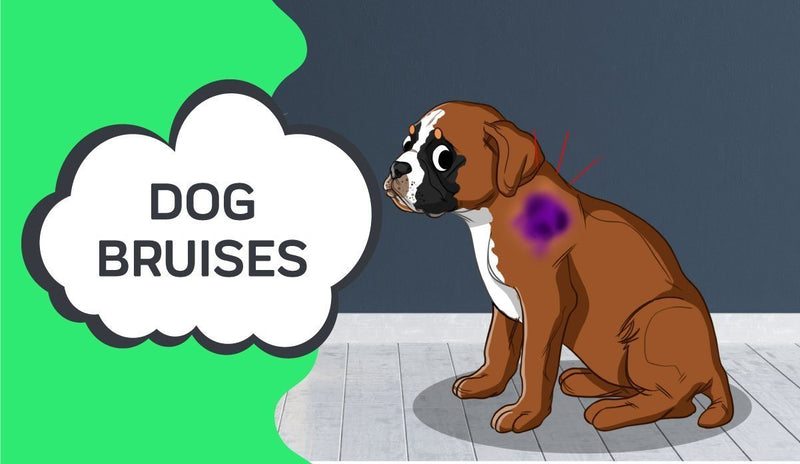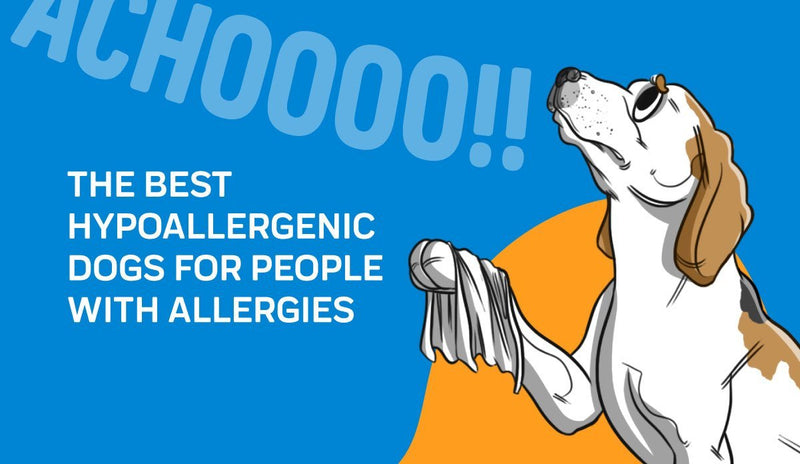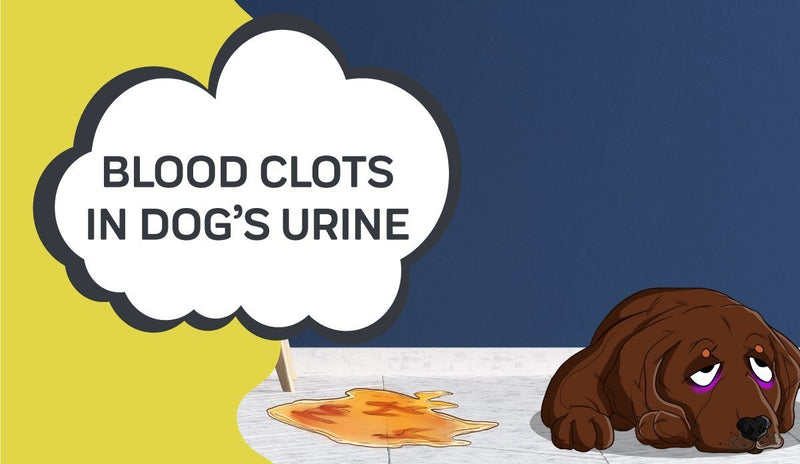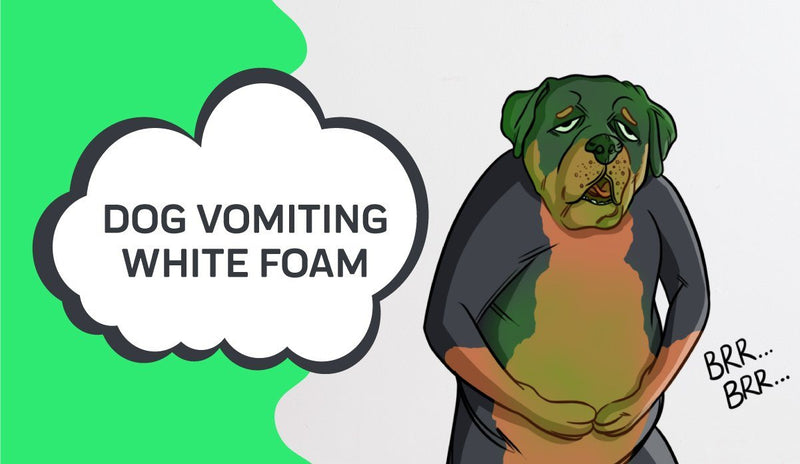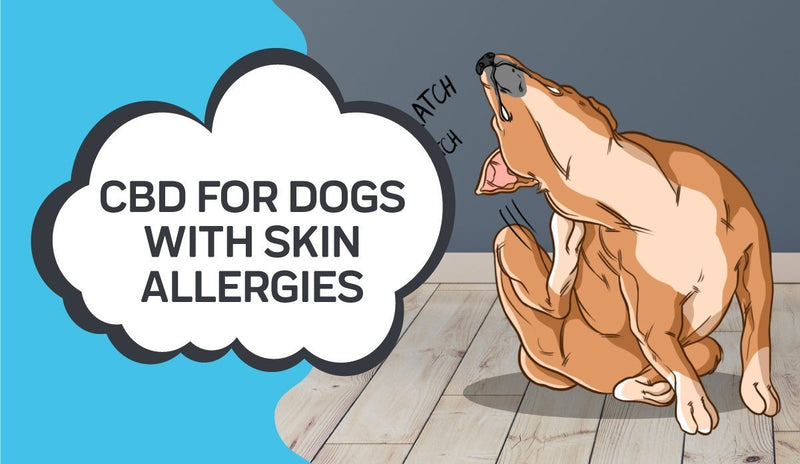- What is Ecchymosis?
- How Do Dogs Get Bruises?
- Where Do Dogs Bruise?
- Medicinal Causes of Bleeding in Dogs: What Not to Give to Your Canine
- Are There Any Signs or Symptoms of Dog Bruises?
- Diagnosing Bruising in Dogs
- How to Treat Dog Bruises
- How to Help Alleviate Dog Bruises Using CBD Oil
- Where to Purchase CBD for Canines

Have you ever found yourself petting your dog only to find that your pup is a little uncomfortable with scratches in certain areas? A clear indication that a dog is in physical pain on contact is when a pup winces, twitches, or backs away from you when you pet them. The response is a way for your dog to communicate that he or she is experiencing discomfort. But what is the root cause of the pain? And what could possibly be lying beneath the surface?
Bruises are likely the cause of your dog's withdrawing behavior. With all the fur that covers a dog's body, it's hard to believe that canines are susceptible to bruising. But like a myriad of living beings, dogs can sustain bruising in the same way that you and I can. The fur coat factor makes it harder to initially recognize that bruises are the root cause of a dog's behavior, but the hidden nature of canine bruises does not make them any less real.
If your dog has the fur type that allows you to see between each strand of hair, then you have a slight advantage over other dog owners in that you can see a tell tale sign of bruising in dogs. Squint if you must, but you should be able to spot very miniscule dots on your dog's skin. The dots are usually a bright red, which is a clear sign of irritation, but you might just so happen to see a few purple dots as well. It depends on the dog, as well as the severity of the bruising. A condition known as pinpoint bruising is yet another way to identify a health concern involving bruises, but we will talk about that in greater detail later on!
On a similar note, your dog might be rubbing a certain area of their body over and over again with their tongue. And if you notice any sort of preference for laying down on a certain side of their body, or for protecting specific body parts when playing with other pups, then your dog might be trying to hide the fact that bruises are present on the dog's body. Pet owners have no obvious way to know for sure until you do a some investigating and find out what lies beneath your dog's fur coat.
Chances are your dog is bruised and they are doing everything in his or her power to keep the bruise from worsening. That's where you come in as a dog owner! Help your dog recover from the current bruising and keep your pup safe from future bruises by learning what causes bruising in dogs. Are you ready for some background information on bruises and an in-depth explanation of the causes of canine bruises? If so, let's get started!
What is Ecchymosis?
Let’s clear up a common misconception regarding ecchymosis and bruises. Ecchymosis is a word that refers to discolored skin that results from bruises. Though the term is not a fancier way of saying bruising, ecchymosis is very much related to bruises. Ecchymosis is referencing the purple, red, blue, orange, and yellow discoloration that forms on the skin over top of the bruising.
This discolored appearance is caused by blood that rises just below the outermost layer of skin. When blood is so close to the surface, it is visible from the exterior of the skin. Typically, ecchymosis will have a diameter of at least one centimeter. The discoloration that results in ecchymosis is a result of a capillaries that have broken beneath the skin's surface. The blood that pours out of the broken capillaries floats to the top and settles right below skin, and it is visible in the form of ecchymosis.
Remember that ecchymosis is not bruising, but rather, it is a result of bruises. Ecchymosis is often considered to be nothing more than big bruises, but now you know that there is a slight difference between ecchymosis and bruising in dogs. Also, ecchymosis can be present in the absence of bruising, so it's important to determine if what you're looking at is ecchymosis accompanying a bruise, or if it is ecchymosis on its own.
How Do Dogs Get Bruises?
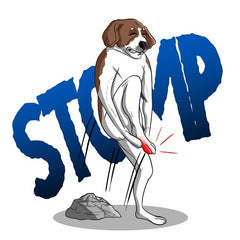
First and foremost, blood clotting disorders in dogs might just be the result of genetics at play. When dogs are born with clotting problems, their clotting disorders are labeled as being congenital. However, not all dogs that experience problems with their blood and its ability to clot like it's supposed to are the victims of congenital blood clot disorders.
Some dogs can actually develop disorders of the blood later on in life. This type of issue with blood clotting in dogs is called an acquired blood clotting disorder. These clotting problems are far more common than congenital blood clotting disorders in dogs.
In terms of anatomy, dogs get bruises in the same way. It all starts with an interruption to a dog’s homeostasis. The inner workings of a dog’s body is changed in a nonfunctional way in terms of blood platelets, and proteins, as well as the functioning of blood vessels, which are required for blood to clot properly.
Homeostasis is affected whenever a force causes your dog’s blood vessels to burst. When this happens, blood vessels are supposed to constrict so that less blood will flow to the location of the rupture and prevent blood for quickly spilling out from the damaged spot. This is how clotting starts.
Blood proteins and platelets also make their way to the origin of where the blood is beginning to clot. They work together to assist in the process of blood clotting, and eventually, they create a barrier that holds blood back, keeping it within the interior of your dog’s body. Just like that, a clot has formed and the blood is retained in the body. Without blood clotting, the blood would continue to flow out of the body to a point where the blood levels are unhealthy and dangerous.
In terms of everyday causes that might lead to bruising, dogs can get bruises in all sorts of ways. The most common circumstance that will cause bruising for your dog is an accident that involves a motor vehicle, like being hit by a car. Notorious for rough housing, a dog may run the risk of getting bruises when they play with their canine friends.
Whether they are pinned by another dog and the dominating dog holds the other dog down too hard, or one dog bites down too hard on his puppy pal, the examples are nearly endless. Play dates with dog friends are not often going to result in bruising, but it’s not impossible. Essentially, all that has to happen for a dog to get a bruise is something must make contact with the skin in a forceful way.
If you are curious to find out if your pup is at risk for a blood clotting disorder that has yet to present itself, then you should consider having a blood clotting test conducted for your dog. Tests of this nature focus on the quantity of proteins that are needed in order for blood to clot properly. Dogs that have trouble with blood clots are missing proteins required for the body to clot blood, and the proteins in these dogs’ systems are determined by blood clotting tests.
These tests compare the blood protein count of a dog to the appropriate number of proteins that a dog needs for proper blood clotting to occur. The one thing to keep in mind when turning to a blood clotting test for help is that they are not incredibly precise or telling. In other words, clotting tests for dogs are limited to how much information they can give you.
Unless your dog has a very low protein count, then a clotting test will not reveal much information. Since blood clotting tests are not the most informative, the best thing you can do is keep an eye out for signs and symptoms of dog bruises.
Where Do Dogs Bruise?
Bruising in dogs is often seen in areas such as the whites of a dog's eyes, their gums, and on their genitalia. Larger bruising can be seen more commonly around sensitive skin like under the inside thigh or along the soft underside of a dog's belly. The tell-tale sign that it’s not just an irritation but actually a bruise if you press gently into this area to see how quickly color will fade away from your fingertip.
Medicinal Causes of Bleeding in Dogs: What Not to Give to Your Canine
The underlying cause of every single case of canine bruising is trauma. Bruises result from trauma, no matter how big or small the incident was. Another likely cause of your dog's bruising problems might actually shock you. A side effect of non-steroidal anti-inflammatory drugs or NSAIDs, is bruising caused by excessive and abnormal bleeding.
The same goes for aspirin, which dogs should not be taking in the first place. Aspirin is a medication that can be lethal for dogs, and taking aspirin consistently, or even just one time in a large dose, will result in unsafe levels of bleeding. This is especially true with dogs that are on other medications that also thin the blood, making it harder for blood to clot. When your dog ingests aspirin, the blood coursing through their veins and pooling in vessels loses its ability to form clots.
Platelets are prevented from performing their life-saving functions at the location of punctures and trauma. As a result, platelets and blood proteins do not interact as they are supposed to, so they cannot work together and close the opening from which blood is spilling out. Blood that cannot clot poses a serious danger for your dog, so it’s imperative that you seek medical attention immediately if you are under the impression that your pup is having blood clotting issues.
Are There Any Signs or Symptoms of Dog Bruises?
The signs and symptoms of dog bruises are the best way to detect bruises. A lot of physical ailments can be seen with ease, like chickenpox or eczema. Bruises are usually one of those examples of problems you can see from the surface, but when dogs have bruises, it is much harder to spot the problem in the first place. This is due to the fact that most dogs have an entire coat of fur covering their skin, so you’d have to brush back their hairs and do some serious investigating to spot a dog’s bruise.
For that reason, it’s best to educate yourself on the symptoms that dog bruising causes, because this way, you’ll be able to connect the dots and deduce that your dog might have a bruise, or two, or three!
Some of the symptoms of canine bruises include...
- Black spots in stools
- High respiratory rates
- Eyes that appear red due to blood forming at the back of your dog's eyeball
- A heart rate that remains higher than usual for a prolonged period of time
- Bleeding that does not stop anywhere on the body
- Noticeable difficulty when it comes to breathing, especially when stationary
- Nosebleeds, especially those that do not stop on their own
As a pet owner, you should be aware of the different reasons that can cause your dog to bruise. The vet will need an in-depth medical history before they start looking at any physical abnormalities which may have been caused by injury or disease. They might look for signs of bruising on their gums, wounds and swelling around various parts of their body; however, if it is not visible enough then a urine test may show blood from what appears to be internal bleeding.
When your vet sees that you have a dog with clotting issues, they will want to know if he has had any recent trauma or injuries. They also might want to know about his parental history and rule out the possibility of him ingesting something toxic from outside sources.
Once your vet rules out the most obvious causes for bruising in a dog, they will move on to other potential causes and run tests to determine what those might be. You can expect blood testing to check for low platelets, clotting issues, and immune disorders; as well as tests like x-rays of the chest and abdominal cavity just in case something is going wrong internally. If it becomes clear that there may indeed be internal bleeding or another problem with organs not getting enough blood flow because of this issue which could result from an external wound building up pressure somewhere else inside their bodies then ultrasounds are sometimes ordered instead so you know if anything needs immediate attention before more serious problems start developing down the road!
As a pet owner, you should be aware of the different reasons that can cause your dog to bruise. The vet will need an in-depth medical history before they start looking at any physical abnormalities which may have been caused by injury or disease. They might look for signs of bruising on their gums, wounds and swelling around various parts of their body; however, if it is not visible enough then a urine test may show blood from what appears to be internal bleeding.
When your vet sees that you have a dog with clotting issues, they will want to know if he has had any recent trauma or injuries. They also might want to know about his parental history and rule out the possibility of him ingesting something toxic from outside sources.
Once your vet rules out the most obvious causes for bruising in a dog, they will move on to other potential causes and run tests to determine what those might be. You can expect blood testing to check for low platelets, clotting issues, and immune disorders; as well as tests like x-rays of the chest and abdominal cavity just in case something is going wrong internally. If it becomes clear that there may indeed be internal bleeding or another problem with organs not getting enough blood flow because of this issue which could result from an external wound building up pressure somewhere else inside their bodies then ultrasounds are sometimes ordered instead so you know if anything needs immediate attention before more serious problems start developing down the road!
How to Treat Dog Bruises
Some cases of bruising in dogs are easily treatable, but others could require blood transfusions and even a plasma transfusion. If your dog has an immune system disorder or is suffering from liver failure, they may need to be given vitamin K1 therapies as well as other treatments based on their symptoms.
How to Help Alleviate Dog Bruises Using CBD Oil
Cannabis is being researched more and more nowadays because it seems as though there's nothing that CBD cannot help to resolve. Cannabidiol is very interesting to people because it is rather peculiar and fascinating that a plant-based substance can solve so many health-related ailments. Surprise, surprise -- cannabidiol can help to manage the symptoms and origin of bruising, too! CBD is praised for its anti-inflammatory properties, especially in Pet health.
Cannabidiol helps to reduce inflammation, which is the reason many people assume cannabidiol is so productive and beneficial when it comes to helping with bruising in dogs. But this is not the sole reason, nor the main reason, as to why CBD is perfect for dogs with bruises. While the anti-inflammation aspect of CBD is crucial in the healing process of bruises, another reason why CBD and bruises are the perfect match is that CBD could lower the pain that stems from a dog's bruise.
Naturally, when dogs are in pain, they focus on the origin of the discomfort, but by doing so, they actually end up irritating the sore spot. CBD could make the pain go away and it allows dogs to keep living their lives as though they are completely unaffected by their bruising. Believe it or not, endocannabinoids are not only found in cannabis-derived oils, products, or anything of the like. There are also endocannabinoids in our bodies and those of our dogs, too. As a result, we already have endocannabinoid receptors throughout our internal systems.
So, when homeostasis is thrown off balance and the body's ability is trying to return to a state of harmonious stability, CBD can really help expedite the process. Since people are now capable of choosing which cannabinoids we extract from cannabis, it's more possible now than ever to derive CBD from cannabis and use it as a medicinal supplement for dogs with bruises. Before now, it was hard to make use of cannabis without involving THC, but times have changed. CBD may provide bruising relief, as well as help to heal bruises faster than bruising that is not treated with cannabidiol.
Where to Purchase CBD for Canines
Bruises can be painful if they are not left alone to heal and resolve themselves naturally. While you cannot get rid of bruising on your dog's body with cannabidiol alone, CBD works like magic alongside other preventative and restorative measures when managing dog bruises. The many health effects of CBD are celebrated, especially because cannabidiol is nothing but natural. The number one benefit of using CBD for dogs with bruises is that there are absolutely no adverse side effects of cannabidiol. CBD may either improve your dog's overall condition, or it fails to work -- which is very, very, very rare -- but CBD never causes pups to feel worse. This claim can be nearly impossible for people to believe because prescription drugs always have a lengthy list of possible symptoms that arise after taking the medication.
But you have to keep in mind the fact that over-the-counter pills and prescribed medicines are man-made in a laboratory. That is the primary reason as to why there are so many negative and adverse reactions attached to these medications. CBD is a plant-derived substance that may be able to resolve a plethora of health concerns, and if your pup is suffering from the painful tenderness and discomfort of bruising, then CBD is a good option to explore!
CBD oil from Innovet is every dog's new best friend. They just don't know it quite yet, but once you introduce your dog with bruises to cannabidiol, you'll realize that you've discovered an alternative to manage many ailments, even beyond canine bruises. Dogs with bruises have a variety of CBD to choose from at Innovet.
The most common form of cannabidiol for dogs is CBD oil, but since some dogs are averse to the feel of oil on their fur, Innovet has made sure to offer a plethora of CBD-infused products. Doggy treats and soft chews are available for the pups that like to snack, and CBD creams for dogs are stocked up and ready to be purchased! Yet another option of canine CBD from Innovet is the hemp CBD capsules, which is a quick way of administering cannabidiol for pet owners who do not mind the process.
Sources:
Bleeding Under the Skin in Dogs
Bleeding Under the Skin of Dogs

Thanks for stopping by!
P.S. We Love You!
Sincerely,
The Innovet Team
Please do not ask for emergency or specific medical questions about your pets in the comments. Innovet Pet Products is unable to provide you with specific medical advice or counseling. A detailed physical exam, patient history, and an established veterinarian are required to provide specific medical advice. If you are worried that your pet requires emergency attention or if you have specific medical questions related to your pet’s current or chronic health conditions, please contact or visit your local/preferred veterinarian, an animal-specific poison control hotline, or your local emergency veterinary care center.
Please share your experiences and stories, your opinions and feedback about this blog, or what you've learned that you'd like to share with others.










